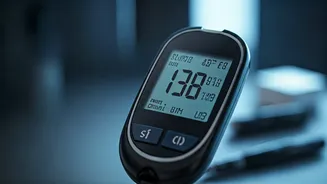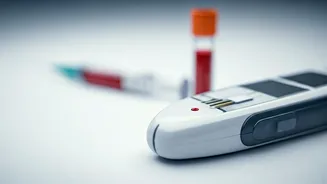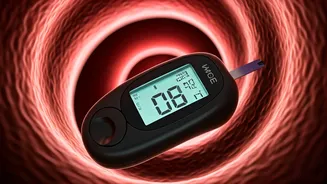Defining Diabetic Coma
A diabetic coma represents a serious health crisis for those managing diabetes. It is characterized by a prolonged state of unconsciousness, which may
develop because of severe imbalances in blood sugar levels. This condition demands immediate medical intervention to restore normal glucose levels and prevent organ damage. The brain depends on a steady supply of glucose for energy, and it suffers greatly when glucose levels fluctuate to extremes. In the case of hyperglycaemia, the body may become dehydrated, and toxic ketones can accumulate, particularly in those with type 1 diabetes, potentially leading to diabetic ketoacidosis (DKA). Conversely, if blood sugar falls too low, the brain is starved of glucose, triggering confusion, seizures, and eventual loss of consciousness. It is essential to understand that a diabetic coma differs significantly from a simple fainting episode, necessitating immediate professional medical care to prevent potentially fatal outcomes.
Causes and Triggers
The onset of a diabetic coma hinges on several factors, all related to either excessively high or low blood sugar. Hyperglycaemia can be caused by missed insulin doses, overeating, or even infections, illnesses, or stress, which elevate blood glucose. The body then begins to break down fat, leading to the release of ketones and resulting in dehydration and acidosis, which can all culminate in a coma. Conversely, in hypoglycaemia-related cases, it can be triggered by taking too much insulin, skipping meals, intense physical activity without proper food intake adjustments, or consuming alcohol, resulting in a dangerous drop in glucose. The brain becomes deprived of energy, and confusion, disorientation, or unconsciousness ensues. The retrospective study reviewed 102 cases of drug-induced hypoglycaemic coma and found that risk factors included older age, renal dysfunction, and infection. These events highlight the varied triggers leading to this severe condition.
Warning Signs to Watch
Recognizing the early warning signs of a diabetic coma is essential for timely intervention. Warning signs can vary depending on whether the coma is caused by high or low blood sugar. In cases of hyperglycaemia, symptoms may include increased thirst and frequent urination, blurred vision, headaches, extreme tiredness or weakness, and fruity-smelling breath due to ketone buildup. Hyperglycaemia may also lead to confusion, blurred vision, and slurred speech. On the other hand, hypoglycaemia symptoms include sudden shakiness, sweating, hunger, dizziness, weakness, and anxiety. Additional signs include disorientation, seizures, or loss of consciousness in severe cases. Furthermore, long-term diabetics may develop hypoglycaemia unawareness, where early warning signs are absent, increasing the danger of sudden severe episodes. Early detection and treatment can make a significant difference in preventing progression to a coma and potential health complications.
Prevention Strategies
Preventing a diabetic coma is achievable through consistent diabetes management. Regularly monitoring blood sugar levels is a cornerstone of prevention. Strict adherence to a prescribed diabetes treatment plan, including proper medication dosages and timing, is critical. Furthermore, consistent meal timing and portion control are essential for stabilizing blood sugar. Regular physical activity, undertaken safely and with the guidance of healthcare professionals, contributes to better glucose control. Awareness of the factors that can impact blood sugar levels, like stress, illness, and medication, allows for proactive adjustments. People need to also be educated on the early warning signs of both high and low blood sugar to seek immediate medical assistance. Regular check-ups with healthcare providers are necessary for evaluating overall health and making timely adjustments to diabetes management strategies.
Seeking Medical Attention
Prompt medical attention is crucial when a diabetic coma is suspected. In any case of suspected diabetic coma, it is essential to seek emergency medical care immediately. If someone with diabetes displays signs of extreme confusion, loss of consciousness, or any of the warning symptoms, medical help must be sought without delay. The focus of medical intervention is to quickly normalize blood sugar levels. This may involve intravenous fluids, insulin administration, and close monitoring in an intensive care setting. Timely intervention can significantly improve outcomes and prevent severe health consequences. If the person has lost consciousness, it is even more critical to get them to the hospital. Prompt diagnosis and treatment are crucial. It's best to be proactive and informed, which is the best form of preparedness for managing and preventing diabetic coma.












